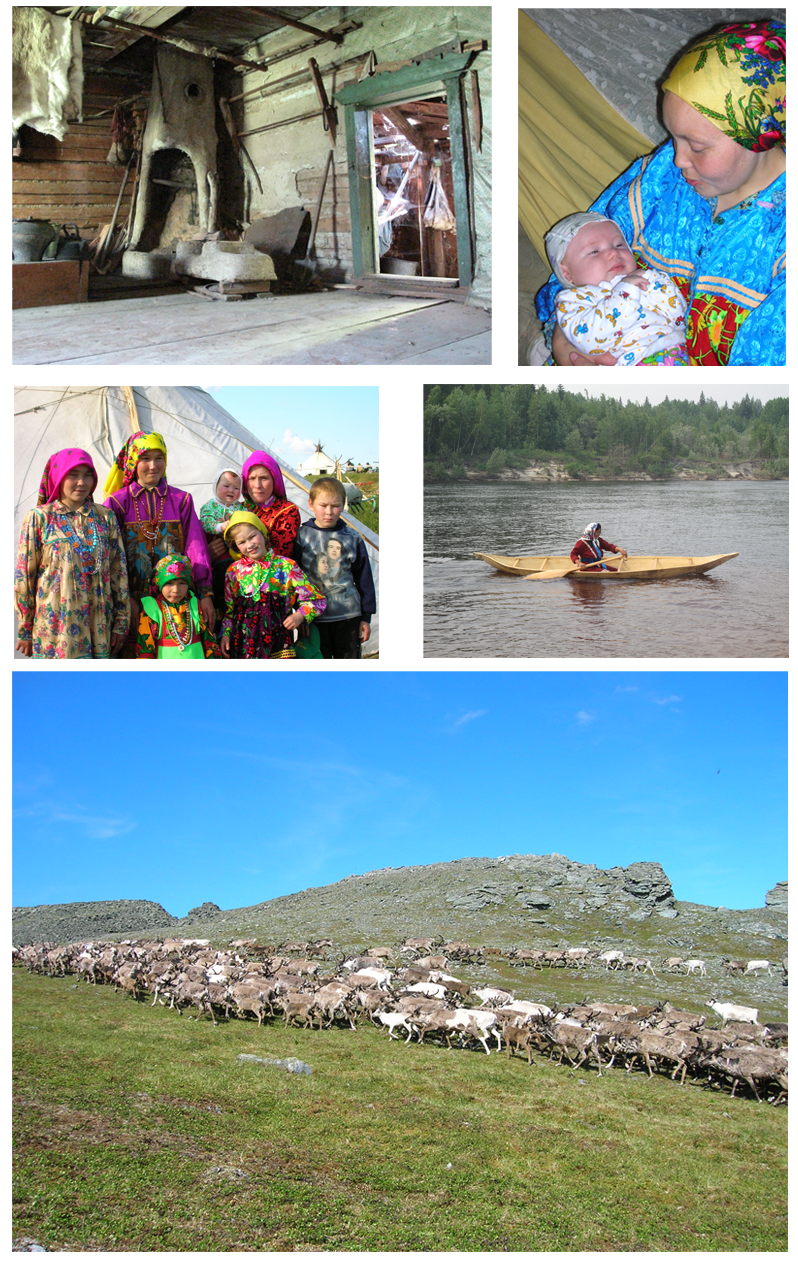Language description
Khanty is a Uralic language spoken by almost 10,000 people in the Asian part of the Russian Federation. There are around twenty Uralic languages. Languages which belong to a given language family all have a common language ancestor. In this particular case, the common ancestor was the Proto-Uralic language, which was spoken until around 2000 BC in what it is today Northwest Siberia and the eastern and northern part of Europe. Languages such as Finnish, Hungarian, Udmurt, Khanty and Nganasan all stem from the Proto-Uralic language and we speak of them as genetically related languages.
Further information and resources on Khanty and the Uralic languages:
Хăнты Щирəн (In the Khanty way) http://hantisirn.nytud.hu/ is a website containing ethnogaphic and linguistic data on the language and culture of the Synya Khanty.
This site: http://www.sever.eduhmao.ru/info/3/4502/ contains issues of Ханты ясанг – a newspaper in the Khanty language
On http://finno-ugric.com/index.html you’ll find more information about Finno-Ugric languages (a subfamily of the Uralic), as well as a map showing their geographical distribution.
This youtube video contains songs in different Uralic languages: http://www.youtube.com/watch?v=Q2YsghMr6Po

Exercise 1
Below you’ll find recordings of some basic vocabulary in different Finno-Ugric languages. Listen to them and answer the questions on languages most closely related to Khanty.
| English | Khanty | Veps | Hungarian | Komi-Permyak | Mansi | Saami |
|---|---|---|---|---|---|---|
| heart | ||||||
| ear | ||||||
| tooth | ||||||
| tree | ||||||
| fish | ||||||
| two | ||||||
| four |
Q1: Judging by the similarities you hear, which language has the closest level of relationship with the Khanty language?
Answer
Mansi. You can tell that because of the sound correspondences (especially due to similar consonants) and vowel length. Khanty and Mansi sound so similar because historically, the common ancestor of these two languages, i.e. Proto-Ob-Ugrian, separated and split up later than the ancestors of other Uralic languages separated from the Proto-Finno-Ugric. Certain groups of Khanty and Mansi people have been in very close contact, which is reflected in their languages. See http://www.babel.gwi.uni-muenchen.de for further resources and information about Khanty and Mansi.
Q2: What is the second closest language to Khanty? Is it as easy to establish as in the case of the genetically most related language?
A: Hungarian is the language which is second closest to Khanty genetically. This is more difficult to guess because the phonetic correspondences are less obvious. The ancestors of Hungarians left the homeland of the Proto-Uralic for Europe much earlier than the ancestors of Khanties and Mansis, and this is why, due to the abundance of sound changes in the course of the individual history of Khanty and Hungarian, the corresponding words sound so much different.
Exercise 2
One method of proving genetic relationships between languages is finding sound correspondences. Sounds of a language can be represented in writing, e.g. with letters of the alphabet. Here you can find the Khanty and Hungarian reflexes of some Proto-Uralic words. What kind of sound correspondences can you identify between Hungarian and Khanty on the basis of the list below? Khanty uses a script based on the Cyrillic alphabet and the Khanty words are given alongside their transliterations into the Roman alphabet.
| Hungarian | Khanty | meaning |
|---|---|---|
| eb | амп (amp) | ’dog’ |
| hab | хўмп (khump) | ’wave, foam” |
| ház | хот (khot) | ’house’ |
| száz | cот (sot) | ’hundred’ |
| tűz | тўт (tut) | ’fire’ |
| fi-ú | пŏх (pokh) | ’boy, son’ |
| fű | пам (pam) | ’grass’ |
Answer
In this set of basic vocabulary we can find the following sound correspondences:
Hungarian word final b ~ Khanty mp
Hungarian word final z ~ Khanty t
Hungarian word initial f ~ Khanty p
Exercise 3
Contrary to languages such as English, which uses pronouns such as my, your, his, her, etc., Khanty expresses possession with the use of possessive suffixes. These are small meaningful parts attached to the word. As there are 3 grammatical numbers in Khanty: singular, dual, and plural, we can distinguish three numbers of the possession (our cat, our two cats, our many cats) as well as three numbers of the possessor (my house, the house of the two of us, our house). How many different versions of the same noun are there in Khanty if one wants to express possesion?
Answer
27 (3 x 3 x 3). It is illustrated with the example of the word xot ‘house’ in the table below:
| Possession | |||
|---|---|---|---|
| Possessor | ‘one house’ | ‘two houses’ | ‘several /many houses’ |
| ‘I’ ‘you’ ‘he / she / it’ | xotem xoten xotəl | xotŋəlam xotŋəlan xotŋəlal | xotlam xotlan xotlal |
| ‘we (dual)’ ‘you (dual)’ ‘they (dual)’ | xotemən xotən xotən | xotŋəlmən xotŋələn xotŋələn | xotləmən xotlən xotlən |
| ‘we (plural)’ ‘you (plural)’ ‘they (plural)’ | xotew xotən xotel | xotŋələw xotŋələn xotŋəlal | xotləw xotlən xotlal |
